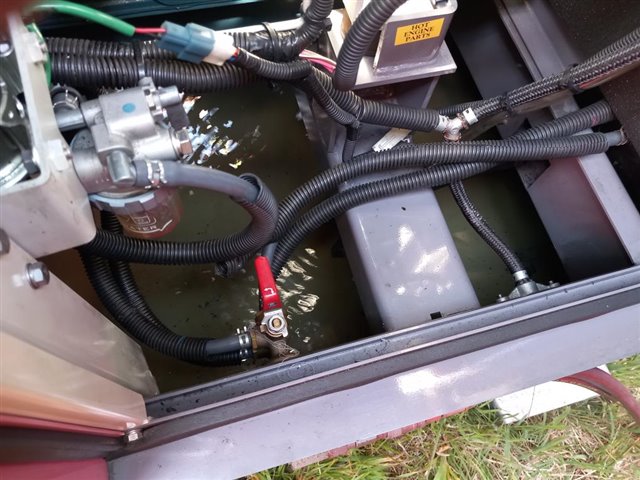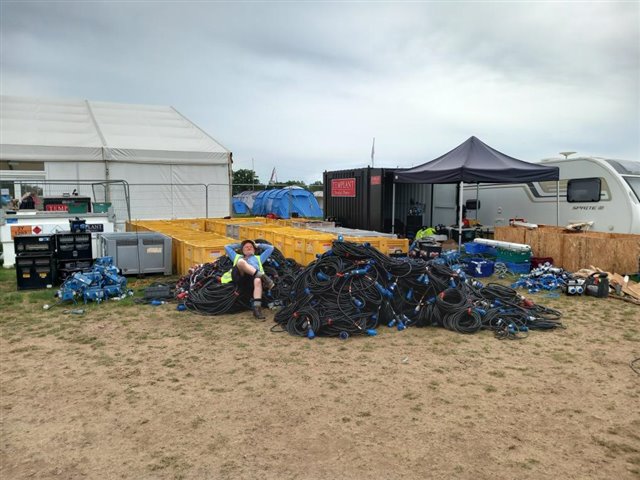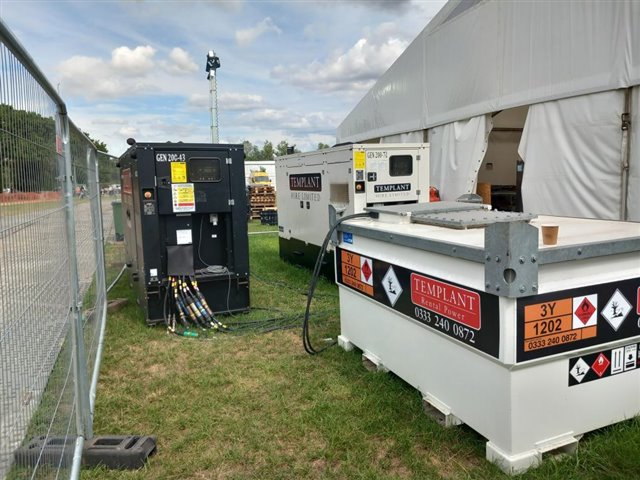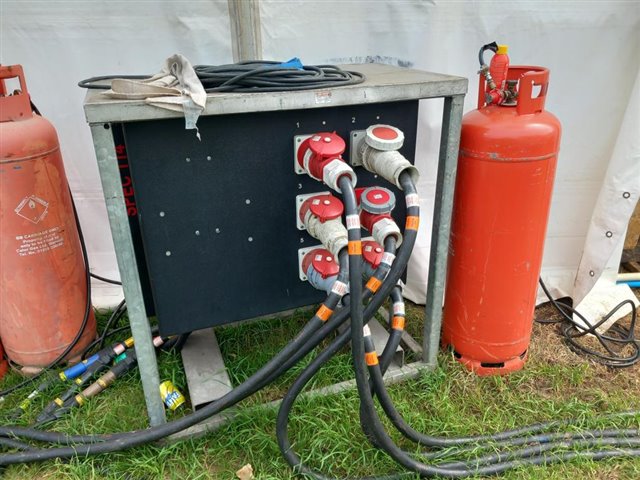This is not a question really more of a blank thread to prevent my waffling about the Essex Scout Jamboree cluttering up another thread.
This is not a question really more of a blank thread to prevent my waffling about the Essex Scout Jamboree cluttering up another thread.
For those who don't know I've just spent a couple of weeks being far more hands-on than is normal for me these days with the electrics of the Essex Jamboree- think 10000 Scouts and leaders in a field, lots of gensets lots of wire and a rather hassled team of us keeping the lights on and diesel flowing. But I also like to take the chance to chat and see what folk are doing who work in other areas.
Should I have had a third pint before waving my arms around like Kermit the frog over our only set of sketches that were at that point the current best plan for the next day, well with hind-sight, probably not. Still they dried out OK, and were just a bit sticky next day and I got the coveted 'lemon of the day' award....
![]()
As someone asked my role, it is not assigned in a formal way -we all volunteer, so it is better seen as a controlled anarchy where we do as much as we are happy with !
My role, in advance, was some sums about forces on overhead cables, to prove to the H& S team we had safe festoon lengths and wind resistance, and then creating voltage drop tables. In terms of design, not much more than load and lengths and that had largely been pre-done by someone else, then the actual build is more like running around with pre-wired leads and fittings so closer to BS7909 really. Hierarchical RCDs and earth fault relays, 34 gensets including two synchronous pairs, one for catering at 400kVA total and one for stage at about 300kVA. My special skills apart from running round with arms full of cable and radioing through for adapters, were earth rod testing and odd EMC matters. Once built to keep it running is all about fuel, either checking tanks or changing filters. Or, just occasionally the odd worrying leak,

Yes, those wave patterns really are in several inches of diesel oil filling the bund of a 40kVA unit, A leaking fuel line has been filling it slowly overnight, and we are almost drowning the battery and the fuel valves.
and at the end, when all the mains cable has to be coiled up again, there is quite a lot of it. the human, (me) is for scale.

Mike.
PS those tandem gensets and the fuel tank for the week,
I'm getting past it, I'm feeling tired after just running and plugging in a few extension leads. The good news is no need to worry about 30mA RCDs at this size... This box feeds 6 sets of 128A and supplies lower level distro for staff catering and are pretty much fully loaded in the hour or so before meal times. It also needs 3 or 4 people to position it....

Nice one Mike - sounds like you had an interesting time.
... I did wonder if there are any distance requirements between propane cylinders and electrical installations though....
- Andy.
Be re-assured that rest of the cylinders were in a cage somewhere further from the tents. At the kitchen, some co-siting is unavoidable.
Actually gas and fire risk management is a serious concern, and the camping groups have to be sited and laid out so that their kitchen areas are not adjacent and are still far enough from their own and each other's sleeping areas. Spare bottles are to be stored away from that area. This leads to a lot of widely spaced cylinders exposed alongside unusually wide walkways, which looks a bit odd but is not as silly as it at first appears. You certainly don't want cylinders in tents or cookers under canvas that is going to be closed.
Some regulations have odd effects. Declaring one large tent to be a 'cinema' suddenly requires it to have 3 hr battery backed up emergency lighting over its exits. despite the fact that the occupants will all have torches and a good fraction are probably wearing pocket knives that in an emergency would allow them to walk out through any tent 'wall' in seconds even if its not the proper exit... A situation not seen in any normal cinema.
Mike
Be re-assured that rest of the cylinders were in a cage somewhere further from the tents. At the kitchen, some co-siting is unavoidable.
Actually gas and fire risk management is a serious concern, and the camping groups have to be sited and laid out so that their kitchen areas are not adjacent and are still far enough from their own and each other's sleeping areas. Spare bottles are to be stored away from that area. This leads to a lot of widely spaced cylinders exposed alongside unusually wide walkways, which looks a bit odd but is not as silly as it at first appears. You certainly don't want cylinders in tents or cookers under canvas that is going to be closed.
Some regulations have odd effects. Declaring one large tent to be a 'cinema' suddenly requires it to have 3 hr battery backed up emergency lighting over its exits. despite the fact that the occupants will all have torches and a good fraction are probably wearing pocket knives that in an emergency would allow them to walk out through any tent 'wall' in seconds even if its not the proper exit... A situation not seen in any normal cinema.
Mike
We're about to take you to the IET registration website. Don't worry though, you'll be sent straight back to the community after completing the registration.
Continue to the IET registration site